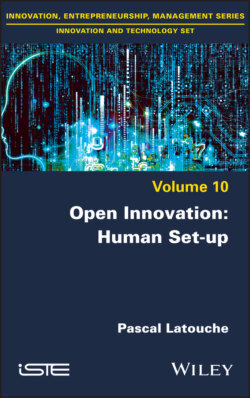Читать книгу Open Innovation - Pascal Latouche - Страница 13
I.5. You (really) want to know everything!
ОглавлениеLet me share with you what you will discover in this book. This is the second one. The first one I entitled “Open Innovation, Corporate Incubator”, the fruit of my doctoral thesis, was, as I like to say, halfway between “the academic” and “the general public”. By that I mean that my point may have seemed a bit too elaborate. I’ll take it! The aim was to understand how open innovation works using the artifact (representation) of the corporate incubator. Theories were inevitably shared, but the expression of the field was favored (mainly managers of corporate structures supporting start-ups). For this second opus, you will judge for yourself the accessible nature of the work. “Everything you always wanted to know about the relationship between start-ups and large corporations, but never dared to ask” could have been its title in reference to Woody Allen’s film “Everything you always wanted to know about sex, but never dared to ask”. As you can imagine, my theme is somewhat different, although we’ll often talk about marriage.
In the overall system that a company and its environment constitute, managers of open innovation systems act as architects whose main raw materials are interactions. They have to forge and then manage the latter in order to contractually marry the protagonists of two different worlds: the CEO of a start-up and the employee of a large group. Each of the two protagonists will interact with their own personalities and beliefs. In addition, their respective “families” (mentors, etc. for the CEO, and colleagues, etc. for the employee) are also involved in this marriage.
The aim of this book is to explicitly describe the daily interactions that need to be implemented to transform these one-to-one, or one-to-many, interactions into tangible (business partnerships) and intangible (satisfaction in the relationship) values. Through my experience, I will try to give an account of the words and behaviors of the protagonists encountered during all these years. My observations will allow me to better understand the perspectives that everyone gives to each other in the interactions, to better understand the perceptions that arise from them. It is the reality of the interactions themselves that will thus be exposed in order to know how to get the best out of them. The conclusions will broaden the scope of reflection beyond the business world. Indeed, human interactions to generate value (in the broadest sense) are not only a necessity in the professional field but also in the personal field. The place of humans in any system is essential. They need to find it to move forward and generate value. On balance, it is our behavior towards others that is in question.
